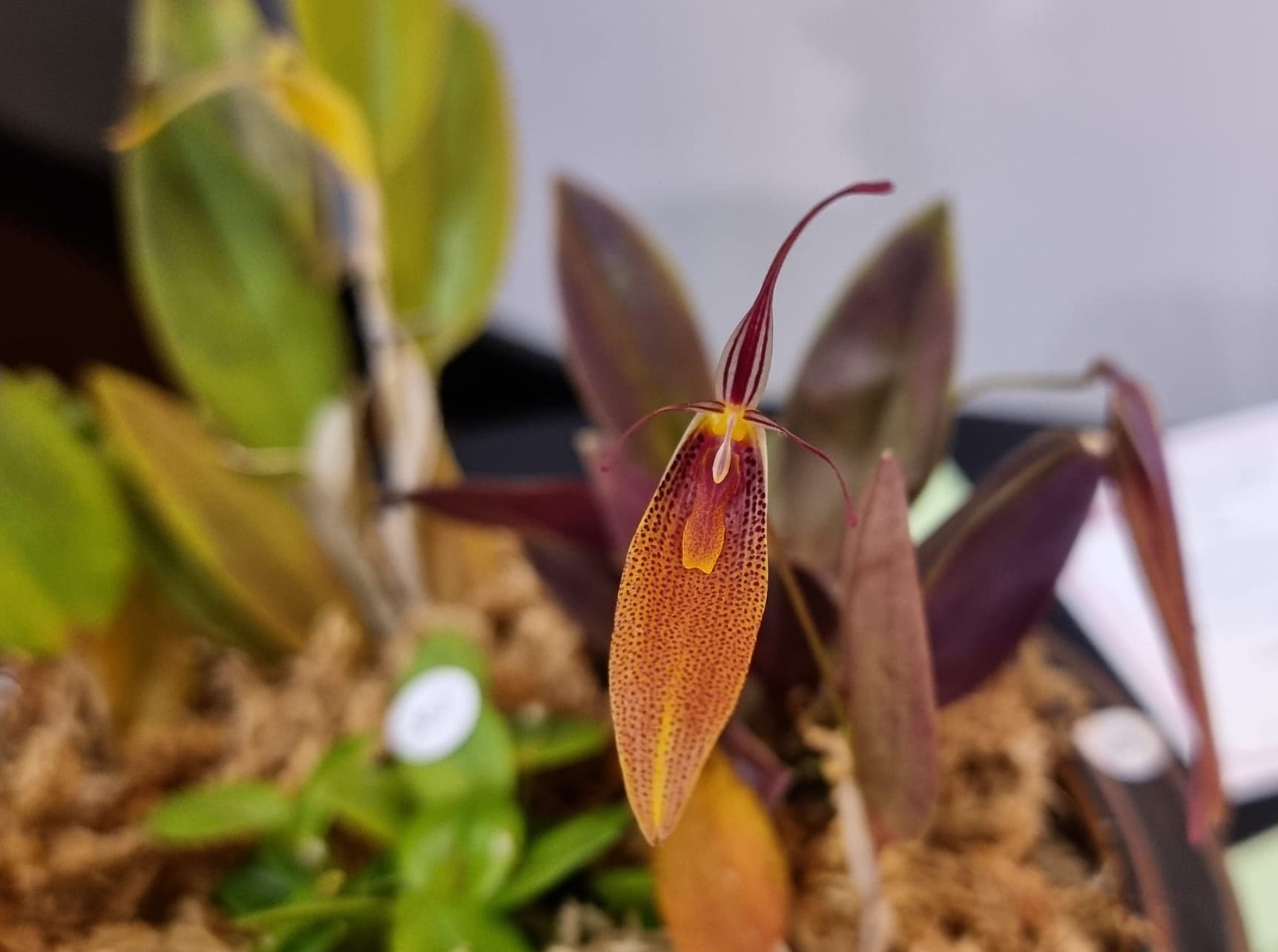A Mentor Like No Other: How Neville Roper Changed My Orchid Growing Journey

I met Neville Roper when I was just 13 years old, attending a Sutherland Shire Orchid Society meeting. At the time, I was a high school student with little knowledge about orchids. On my second meeting, Nev approached me with a box containing about 20 orchid seedlings, handed it to me, and simply said, "Give those a try." I was stunned, not only by his generosity but also by his apparent faith in a young beginner like myself.
What started as a single encounter grew into a lasting mentorship that had a profound impact on my understanding of orchids, seedling propagation, and hybridising. Over the years, Nev taught me lessons that shaped my own orchid-growing practices and ultimately led to a passionate hobby that transformed a large portion of my parent’s backyard into an orchid propagation area.
Sadly, Neville passed away around ten year ago after a long battle with cancer, and I miss him dearly. However, his knowledge and legacy live on. As I reflect on his lessons, I feel compelled to pass on some of his invaluable wisdom, especially for those interested in orchid hybridising.
Neville Roper’s Legacy: A Master of Orchid Hybridising
Neville Roper’s contribution to orchid hybridising is nothing short of extraordinary. Here are some of the highlights of his career:
- Award-Winning Hybrids: Nev earned recognition for creating some of the most exquisite hybrid orchids in Australia, accumulating one of the highest numbers of awards, including numerous FCCs (First Class Certificates) and AMs (Award of Merit).
- Pioneering Sarcochilus Hybrids: Neville is particularly renowned for his work with Sarcochilus orchids, particularly for developing vibrant new colourations. His contributions were groundbreaking and had a significant impact on the species' development both in Australia and internationally.
- Recognition Across Multiple Genera: In addition to his work with Sarcochilus, Nev also received awards for hybridising in other genera, such as Promenea, Dockrillia, Oncidium, and native Dendrobiums.
- Hybridising Achievements: He was one of the few non-professional hybridisers to achieve multiple ASRs (Award of Special Recognition), placing him among the greats in orchid breeding.
Nev's approach to hybridising was not just about achieving beauty but also about improving the plants' overall health, vigour, and sustainability. Below are some of his most valuable lessons that continue to influence my orchid growing journey.

1. Master the Basics of Genetic Inheritance
One of the first lessons Neville taught me was the importance of understanding the basics of genetic inheritance, particularly Mendelian inheritance. While orchids’ complex genomes don’t always follow simple patterns, basic genetic principles can still guide you in understanding what traits might be passed on in a cross.
For example, the albinistic genes responsible for the yellow Sarcochilus hybrids that Neville was known for follow a dominant-recessive inheritance pattern. Understanding these basics allowed him to refine his crosses and consistently produce hybrids that met his high standards.
However, as with all science, genetic inheritance doesn’t always play out as expected. Some crosses defied Mendelian principles, like the albinistic crosses of Den. speciosum, which didn’t always produce the expected colour outcomes. This highlights the importance of ongoing learning and experimentation in orchid hybridising.
2. Certain Species Pass on Specific Traits
Neville often said that hybridising success comes from experience—a lesson that can’t always be found in books. Knowing which species carry specific traits is invaluable when making crosses. For instance, Paph. sukhakulii is known for passing on its spotted markings, while Den. speciosum can dilute purples and pinks in its progeny.
This kind of insight comes from hands-on experience and watching generations of crosses unfold. Understanding these subtleties can help you make more informed decisions when selecting orchids for your breeding program.
3. Keep Your Genetic Pool Fresh
A crucial part of Neville’s success was his commitment to maintaining genetic diversity. Even though he had access to some of the finest plants in the orchid world, he never stopped sourcing new genetics from other hybridisers. Why? Because when you limit your breeding to only your own plants, the genetic pool becomes too inbred, leading to weaker plants and fewer new combinations.
For example, Neville had observed that after several generations of breeding Onc. sotanum, the plants started to show weaker growth and less colour improvement. He sought out new stock from across the country to reinvigorate the line.
This practice of introducing fresh genetics is essential if you want to avoid stagnation in your hybridising program.
4. Don’t Be Afraid to Try a Novel Cross
Neville encouraged me to experiment with novel crosses, even if they seemed a bit speculative. While some of these crosses didn’t pan out (such as using Sarcochilus spathulatus, which produced small, short-lived plants), others led to groundbreaking results. The yellow Sarcochilus hybrids, for example, were once considered odd but have since become highly sought after.
Occasionally taking a risk on a weird-sounding cross can lead to surprising successes. But of course, it’s important to assess each cross critically and evaluate its potential before diving in.
5. Hybridising Is a Numbers Game
As with any breeding program, success in hybridising often comes down to numbers. While it’s tempting to put all your hope in a single seedling, the odds are that only a few of the plants from any given cross will be truly exceptional.
Neville often advised me to buy a few plants from any cross that caught my eye, as this increases your chances of finding a standout plant. Similarly, purchasing a flask (a group of seedlings) is a cost-effective way to get a large number of potential hybrids and increases your odds of success.
6. Good Growing Practices Are Key
Even the best hybridised orchids need proper care to reach their full potential. Neville always stressed the importance of growing your plants well, regardless of how valuable or rare they are. Healthy, well-cared-for plants are more likely to thrive and flower beautifully, which is crucial if you want to see the best results from your hybridising efforts.
I’ve noticed that many hobbyists neglect their seedlings, particularly those they consider experimental or novelty hybrids. These plants deserve just as much attention as your prize-winning orchids.
7. Know When to Let Go
Sometimes, despite your best efforts, a plant just isn’t going to live up to expectations. Neville’s rule was simple: If it’s a dog, it’s a dog. Sell it. While it’s tempting to hang on to underperforming plants in the hope they will improve with age, this rarely happens. Instead, it’s often better to sell the plant and invest in a new seedling with more potential.
However, there are exceptions, particularly when deformities or poor growth may be the result of external factors like weather or chemical exposure. In such cases, it may be worth giving the plant another chance.
Conclusion: Carrying Forward Neville Roper’s Orchid Hybridising Legacy
Neville Roper’s lessons have shaped my approach to orchid growing and hybridising in ways I never expected. His legacy as a teacher and mentor extends far beyond his personal achievements in the orchid world. If you’re passionate about orchids, whether you’re an aspiring hybridiser or simply a collector, I hope these lessons help you understand the complexities and joys of this fascinating hobby.
As I continue to apply Neville’s wisdom, I look forward to the day when others can pass on the same invaluable knowledge to future generations of orchid enthusiasts. And who knows? The next great Australian hybridiser might just be reading this article right now.
